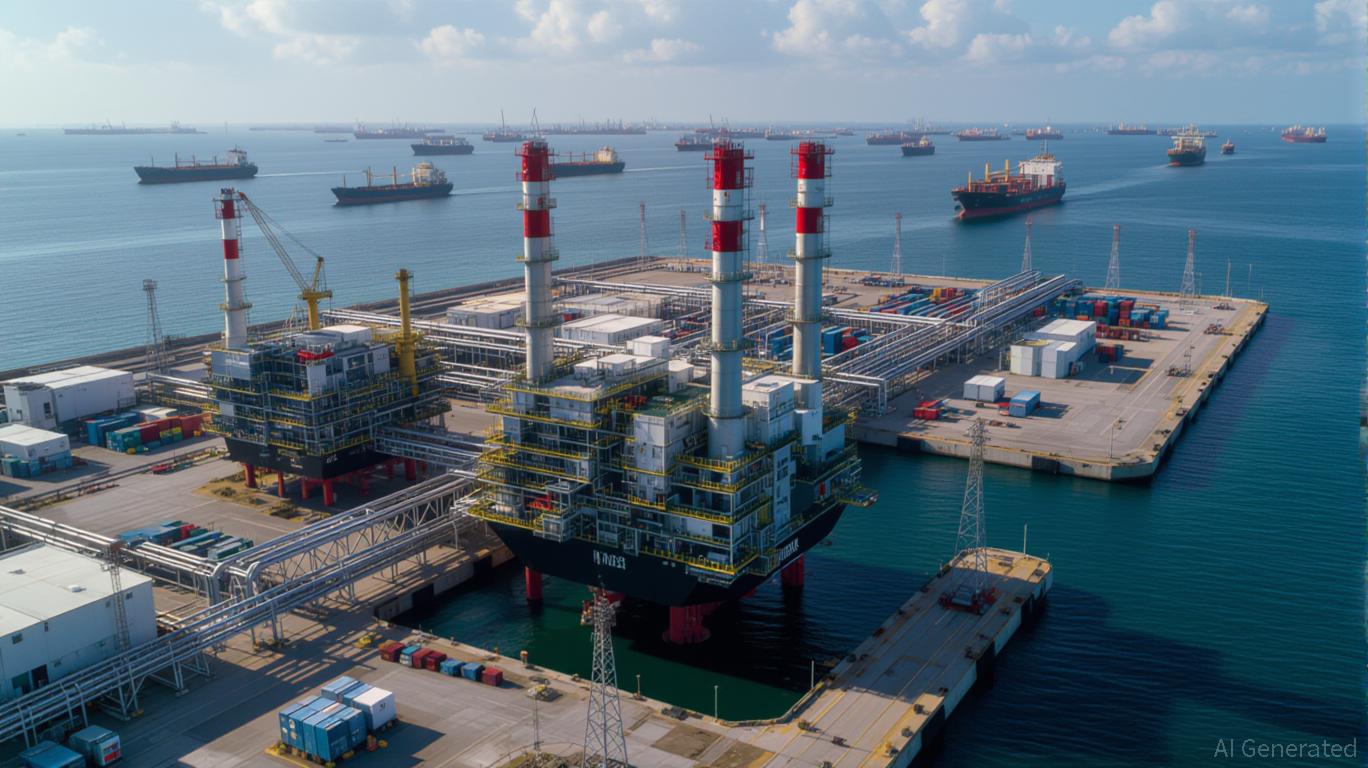
Angola’s National Gas Master Plan (NGMP), launched in 2024, represents a seismic shift in the country’s energy strategy. With a $30 billion investment target and a 30-year horizon, the plan aims to transform Angola from an oil-dependent economy into a diversified energy powerhouse. For investors, this initiative presents a compelling case study in emerging-market energy transitions, but it also raises critical questions about feasibility, risk, and geopolitical positioning.
The Strategic Blueprint: From Oil to Gas
Angola’s energy sector has long been anchored by oil, which accounts for over 90% of its export revenue. However, the NGMP seeks to rebalance this equation by prioritizing natural gas. The plan’s core objectives include:
1. Increasing gas’s share in the energy mix to 25% by 2025, reducing reliance on oil and insulating the economy from volatile hydrocarbon prices.
2. Expanding LNG export capacity through the Angola LNG plant, which is set to add a new mini-train capable of producing 3 million tons per year.
3. Developing non-associated gas projects, such as the New Gas Consortium’s Quiluma and Maboqueiro fields, which will supply both domestic industries and international markets.
The NGMP’s emphasis on non-associated gas is particularly noteworthy. Unlike associated gas (a byproduct of oil production), non-associated gas requires dedicated exploration and infrastructure, signaling Angola’s intent to monetize its untapped resources. The first such project, led by the New Gas Consortium, is on track for a 2025 start, with offshore platforms already completed in February 2025.
Investment Opportunities and Regional Partnerships
The NGMP’s success hinges on attracting $30 billion in investment over three decades. To achieve this, Angola has introduced competitive fiscal terms, streamlined licensing processes, and aligned with international standards. Major players like Chevron, TotalEnergies, and bp are already advancing projects, including Chevron’s Sanha Lean Gas Connection, which achieved first gas in December 2024.
Regional collaboration is another cornerstone of the plan. Angola is strengthening ties with neighbors like Namibia and Gabon, both of which have unexplored deepwater reserves. For example, the Baynes Dam project—a 600 MW interconnector with Namibia—highlights Angola’s ambition to become a regional energy hub. These partnerships not only diversify supply chains but also position Angola as a key player in the Southern African Power Pool.
Risks and Challenges: A Delicate Balancing Act
Despite its promise, the NGMP faces significant hurdles. Regulatory complexity remains a concern, with bureaucratic delays and inconsistent enforcement of policies deterring foreign investors. Additionally, infrastructure gaps—particularly in processing and transportation—could slow monetization of new discoveries. The government’s target to expand the national grid from 3,354 km to 16,350 km by 2025 is ambitious but requires sustained funding.
Macroeconomic instability further complicates the outlook. Angola’s inflation rate hit 27.5% in late 2024, and the kwanza’s depreciation has strained public finances. While the government has allocated $250 million for distribution upgrades, these measures may not offset broader fiscal pressures.
Geopolitical dynamics also play a role. Angola’s strategic partnerships with both Western and non-Western nations—such as the U.S. and China—create a delicate balancing act. While U.S. investment brings technology and capital, it also raises expectations for governance reforms. Meanwhile, China’s infrastructure investments, though critical, come with long-term debt implications.
Global LNG Market Positioning: A Long-Term Play
Angola’s LNG ambitions are not without competition. The country’s proximity to Europe and Asia offers logistical advantages, but it must contend with established exporters like Nigeria and emerging rivals like Mozambique. The NGMP’s focus on expanding the Angola LNG plant and developing new export terminals could help it capture a larger share of the global market.
For investors, the key question is whether Angola can execute its plan amid these challenges. The success of the New Gas Consortium and Sanha projects will serve as litmus tests. If these initiatives meet their production targets, they could catalyze further investment and validate the NGMP’s long-term vision.
Investment Advice: Strategic Entry Points and Risk Mitigation
For those considering exposure to Angola’s gas sector, a phased approach is advisable. Infrastructure-focused companies involved in pipeline development and LNG terminal construction (e.g., local contractors or international firms with regional expertise) offer lower-risk opportunities. Additionally, energy ETFs with exposure to African gas projects could provide diversified access to the sector.
However, investors must remain cautious. Diversifying across regional energy markets and hedging against currency risks (e.g., via forward contracts) can mitigate Angola’s macroeconomic volatility. Engaging with local partners who understand regulatory nuances is also critical.
Conclusion: A Pivotal Moment for Angola’s Energy Future
Angola’s Gas Master Plan is more than a domestic initiative—it’s a strategic bid to redefine the country’s role in global energy markets. By leveraging its gas reserves, expanding infrastructure, and fostering regional partnerships, Angola aims to secure energy independence while positioning itself as a key LNG exporter. For investors, the rewards are substantial, but so are the risks. Success will depend on the government’s ability to maintain regulatory clarity, attract sustained investment, and navigate a complex geopolitical landscape.
As the AOG 2025 conference approaches, the world will be watching to see if Angola can turn its gas ambitions into a reality. For now, the NGMP remains a high-stakes bet with the potential to reshape Africa’s energy map.
